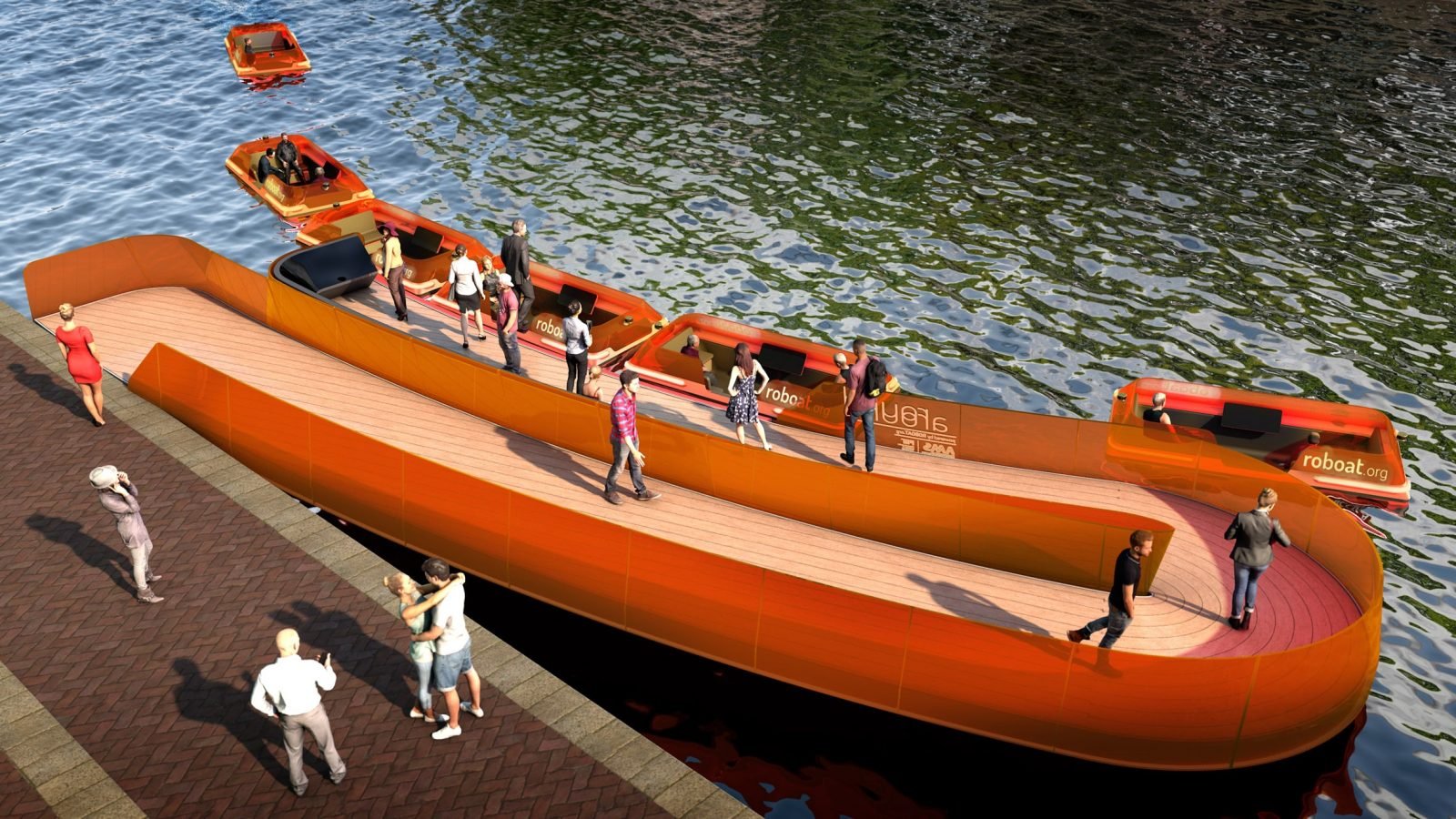Robotic Boats Bridge Both Future Logistics and Transport Problems
A fleet of autonomous boats will tackle Amsterdam’s street capacity problems by relieving logistics operations such as garbage collection.
After three years of development and research for autonomous boat technologies, an update is well deserved: The Advanced Metropolitan Solutions Institute of Amsterdam alongside MIT’s Senseable City Lab are ready to launch a full-scale model of what can be an essential infrastructure for water cities around the world.

Quarter and half-scale models have been used to develop navigation and sensing technologies in Amsterdam’s canals. As well as coming up with technologies for the boat itself, a 3D map of the city was made for data collection purposes as seen in the image below.


Two concrete applications of the Roboats are intended to be used the city of Amsterdam. The first being a moving bridge system that will be used to link the NEMO Science Museum to the historical Dutch Navy dock that has been transformed into an innovation hub. This moving bridge will be primarily used to showcase Roboat’s capabilities and potentials.

The second potential of this technology entails moving the municipality’s current garbage collections system into the water. With Amsterdam’s city center experiencing congestion issues because of mass tourism and logistics operations, it will become more difficult to keep this area clean. Roboat’s garbage collection system are basically floating garbage containers with smart technology sensors.
What could be the direct impacts of applying such a technology in water intensive cities such as Amsterdam? If this technology can eliminate congestion in the busy city center, more room for public spaces, better pedestrian and bicycle infrastructure, and more friendly streets will greatly benefit the livability of a city.



